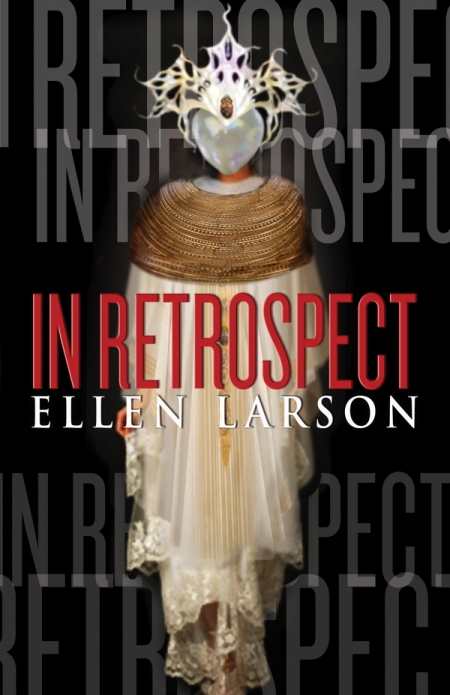
In Retrospect
With twists and turns, In Retrospect has something for fans of both science fiction and mystery.
Ellen Larson’s In Retrospect is a sophisticated psychological murder mystery set in an almost unrecognizable future Earth.
The plot revolves around Merit Rafi, the only Forensic Retrospector left alive after a brutal war between the Oku and Rasakans. As a Retrospector, Merit uses time travel to solve crimes, but she is torn between working for the oppressive Rasakans and staying loyal to what is left of the Oku resistance.
What starts out seemingly as a character study turns into an edge-of-the-seat whodunit as Larson carefully unravels past and present events through a series of flashbacks seen through Merit’s eyes. The flashbacks are labeled, and it is simple enough to judge the chronology based on Merit’s age and environment. Four major time periods are represented. There’s the young, earnest Merit learning to time travel at the Priory; Officer Rafi idealistically debating, laughing, and flirting through life; Merit as Sparrow, a determined militia fighter in the resistance; and present-day Merit, haunted and broken by the events of the war.
The glaring juxtaposition of each earlier incarnation of Merit brilliantly showcases the events that guide her. Each flashback and flashforward reveals another clue. Everyone that she encounters, from Eric Torre, Rasakan physicist-turned-special-forces-agent, to the enigmatic Prioress featured on the front cover, plays a crucial role in shaping not only Merit herself but the tangled state of affairs that has left Okusha’s General Omari Zane dead with no suspects.
A fantasy-style map provides some orientation, although Larson’s Earth in the year 3324 retains a few recognizable features, such as the Mediterranean Sea. Most of the action takes place in Okucha, or what can best be described as the region of ancient Thrace. High-ranking officials wear facial shields, adding to the exotic futuristic mystique. The Prioress, for example, dons a particularly elaborate shield “shaped like two hearts conjoined beneath a lotus crest,” and the “featureless gold” of Marshall John Frey’s full-face shield often intimidates those who gaze upon it.
The dialogue frequently unfolds into esoteric musings concerning time travel and its potential—most importantly, is it possible to alter the past and change the future? The theoretical debates involve retorts such as, “This is the third curvilinear equation of Gellar’s metachronic function…a fragment of the original isochronous flexion parameters used to kindle the First Continuum.” The words possess a certain lyrical quality, if not immediate clarity of meaning. Larson also manages to showcase the attraction between Eric and Merit through these discussions, which are in turns lighthearted and filled with heated frustration. Luckily, it is not necessary to understand every “unexplained anomaly attendant to the fourth-dimensional warp” to appreciate the banter.
Sticklers for grammar may be perturbed by the modicum of errors throughout the text, but the language itself is striking enough to make up for it. In Retrospect has something for fans of both science fiction and mystery, with enough twists and turns to guarantee that it will not be put down until the very last page has been read.
Reviewed by
Pallas Gates McCorquodale
Disclosure: This article is not an endorsement, but a review. The publisher of this book provided free copies of the book and paid a small fee to have their book reviewed by a professional reviewer. Foreword Reviews and Clarion Reviews make no guarantee that the publisher will receive a positive review. Foreword Magazine, Inc. is disclosing this in accordance with the Federal Trade Commission’s 16 CFR, Part 255.
